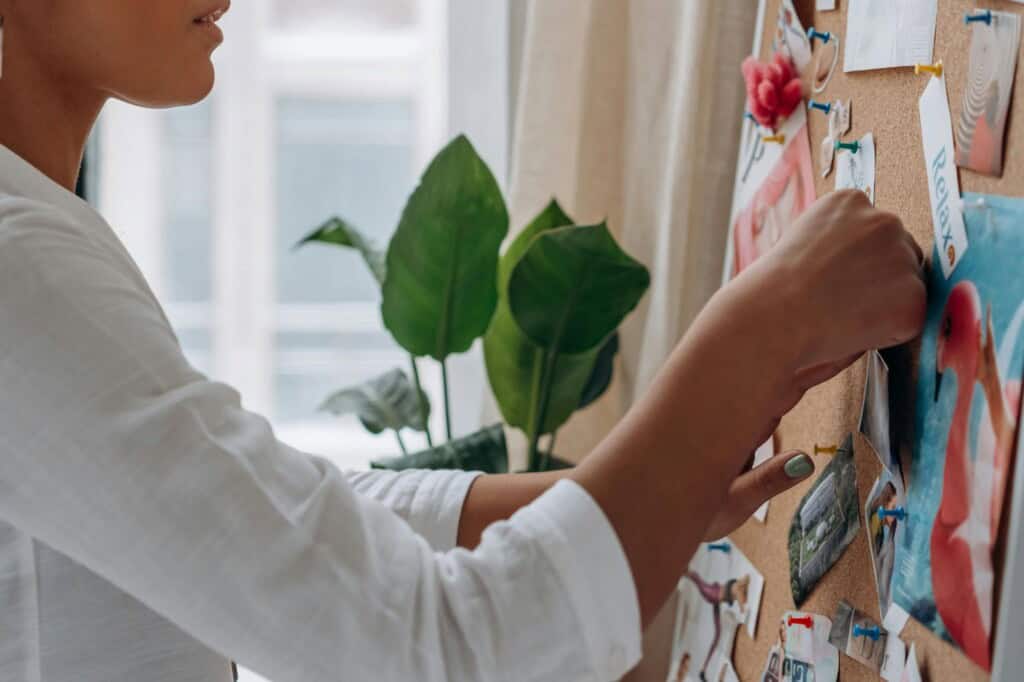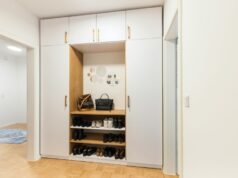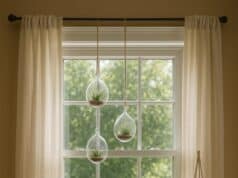
Empty walls can make even the most carefully decorated home seem incomplete. A space that lacks visual appeal can influence the atmosphere and cause rooms to seem unchanging.Art offers a highly efficient way to personalize a home without changing its framework. Turning a bare wall into a display space allows homeowners to express their personality, memories, and aesthetic in a way that evolves over time.
Whether through expansive artwork or smaller personal projects, walls become a stage for expression. A gallery-style setup invites both admiration and interaction, and doesn’t require a high-end budget. It only takes thoughtful planning, the right balance of size and color, and a few creative decisions. This article outlines how to approach the transformation of bare walls using broad-format paintings, photo-based DIY art, and strategic arrangement techniques that bring a cohesive visual story to life.
Planning Your Wall Space Like a Gallery
Before adding any art, it’s helpful to assess the space with intention. Rushing into random placement can lead to clutter rather than cohesion. Planning a wall like a gallery means thinking beyond isolated pieces and imagining how each one will relate to its neighbors and to the room itself. This step defines the visual structure and sets the tone for all the artistic decisions that follow.
Start with a quick observation of the wall’s dimensions, ceiling height, and surrounding light sources. For example, natural light from a nearby window may enhance certain textures but can also cause fading in photographs. After identifying these parameters, determine the wall’s potential: is it a main feature, or does it sit more subtly in the room?
Layout plays a large role in the final impression. Popular formats include a grid arrangement for symmetry, a salon-style approach for eclectic variety, or a central focal piece flanked by supporting artwork. Proportions matter as well—a small piece floating in the center of a large wall will feel disconnected. Large artwork should be balanced with breathing room, while smaller works benefit from being clustered.
Framing and spacing bring structure to even the most diverse collections. Unified frames create visual harmony, while consistent spacing supports readability. Pay attention to alignment—tops or centers of frames can be used to align rows. A well-planned layout makes the installation feel intentional and polished.
Adding a Personal Touch with DIY Creations
While professionally produced art adds refinement, personal projects offer emotion and individuality. They tell a story that’s unique to the homeowner, turning decorative elements into conversation starters. Incorporating DIY pieces makes the wall not just a collection of visuals, but a reflection of real experiences, ideas, and memories.
One of the most accessible ways to contribute to this personalized wall is through photo-based DIY art. These projects use printed photos as the base for creative expressions. A simple technique involves printing images on canvas and applying paint or texture overlays to blend memory with artistry. Others include photo collages shaped around themes like travel or family, or even creating layered shadow boxes that combine photographs with mementos like tickets or pressed flowers.
Digital tools have also expanded the potential for photo-based DIY art. Photo editing software can convert ordinary photos into artistic portraits or monochrome designs ideal for printing. These images can be printed on various materials—canvas, wood, or even metal panels—offering homeowners a wide range of options to choose from.
DIY doesn’t need to be complex. Simple projects like string art over printed photos, framed handwritten notes, or small hand-painted tiles all bring texture and personality. These pieces work well when grouped together, especially around a theme. A hallway gallery of family memories, a kitchen wall of recipe-inspired art, or a staircase collection chronicling travel can all grow over time.
Integrating handcrafted details adds a sense of warmth. It generates a visual rhythm when combined with larger or more formal pieces. Every DIY item doesn’t need to vie for focus; rather, it adds to a complex story that enhances the space.
Combining Styles for a Cohesive Look
Merging different types of art—particularly broad-format paintings and DIY projects—can produce a striking and memorable effect when done with care. Harmony comes from rhythm, balance, and thoughtful color relationships, not from making everything match. A successful gallery wall draws the eye through contrast, texture, and tone.
Broad-format paintings serve as anchors. These are the larger pieces that help define the energy of the space. Whether abstract or figurative, these works give scale and offer a visual resting point. Their presence naturally guides the eye, so their placement should be deliberate. Positioning a large painting slightly off-center can create movement, while a symmetrical setup brings stability.
Color palettes bring cohesion to varied work. When pairing broad-format paintings with photo-based DIY art, draw connections through dominant colors or repeating shapes. For example, a teal brushstroke in a large canvas might echo the tone of a printed photograph nearby. This creates a visual link that unites diverse content.
Framing also plays a role. While mixing frame styles can work in eclectic designs, maintaining consistency in one or two elements—like mat color or material finish—helps the wall read as a whole rather than as unrelated fragments.
Negative space is frequently undervalued. Providing adequate space between artworks enables each piece to breathe and prevents visual overwhelm. Groupings ought to feel purposeful. Attempt to align elements along their center lines or by establishing a clear pathway between them to direct the viewer’s attention.
Avoid placing all similar works together. Spread different types of pieces across the wall, so that DIY and large-format works intermingle. This blend creates variety without chaos. Let texture be a quiet unifier—a painted surface next to a photo print on wood, for example, adds interest without forcing similarity.
Ultimately, a cohesive look is not about perfection. It is about rhythm and mood. When all parts of the wall reflect a shared sense of care, the gallery becomes more than the sum of its parts.
Conclusion
Transforming a bare wall into a gallery brings warmth, personality, and energy to a residence. A deliberate mixture of large-scale art pieces and photo-influenced DIY projects tells a story while enriching the character and dimension of a space. This form of curated artistry attracts people, offering both visual beauty and a significant connection to the surrounding artwork.






